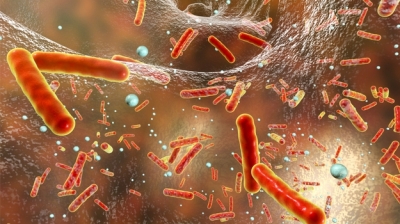
Bacterial infections that don’t respond to treatment are a leading cause of death around the world, a recent study has found. This means antibiotics are becoming less effective against certain disease-causing bacteria. What can we do about it?
In 2019, antimicrobial resistance was directly responsible for an estimated 1.27 million deaths worldwide, and associated with an estimated 4.95 million deaths, researchers reported in the Lancet journal recently. The study found that in that year, more people died from untreatable bacterial infections than from HIV or malaria. HIV/AIDS and malaria have been estimated to have caused 860,000 and 640,000 deaths, respectively.
What is a superbug?
Superbugs are bacteria that have acquired resistance to several types of antibiotic drugs either through genetic mutation or through build up of resistance over time. That is, antibiotics will have no effect on such bacteria.
What are antibiotics?
Antibiotics are commonly prescribed drugs to treat bacterial infections such as diarrhoea and bacterial pneumonia. Antibiotics also prevent infection of surgical wounds. The drugs act on the disease-causing bacteria in our body by either killing them or inhibiting their growth.
Antibiotics are among the most commonly prescribed drugs for people.
They are also administered to livestock for disease treatment and prevention. Antibiotics revolutionised modern medicine in the 20th century.
Who developed the first Antibiotic?
The first antibiotic, penicillin, was discovered by Alexander Fleming in 1928. Fleming was recognised for the discovery in 1945, when he received the Nobel Prize for Physiology or Medicine, along with Australian pathologist Howard Walter Florey and German-born British biochemist Ernst Boris Chain, both of whom isolated and purified penicillin.
What did the study find?
- Antimicrobial resistance kills about 3,500 people every day globally.
- Deaths caused directly by AMR were estimated to be highest in sub-Saharan Africa and south Asia, at 24 deaths per 100,000 population and 22 deaths per 100,000 populations respectively.
- More than 70 % resistance-caused deaths were due to the resistance to antibiotics- beta-lactams and fluoroquinolones.
- Researchers identified Escherichia coli, Klebsiella pneumoniae and Staphylococcus aureus, which cause dangerous infections, to be the top three drug-resistant bacteria or superbugs.
What led to the development of antibiotic resistance?
There are multiple factors that led to the increase in antibiotic resistance among bacteria.
- Bacteria are living organisms and they evolve, adapting to new environments and new challenges, just like any other organism.
- The trait of antibiotic resistance develops over time. Bacteria share genes with other bacteria and thus pass on the resistance.
- Bacteria strong enough to survive a drug will have a chance to grow and multiply
- While antibiotic resistance occurs naturally, misuse of antibiotics in humans and animals is accelerating the process. If an antibiotic is taken against a viral infection, the drug does not target the disease-causing virus but instead kills the good bacteria that aid in digestion and in fighting infection.
- Improper disposal of medical waste leads to contamination of water and soil where the bacteria acquire resistance.
Picture Credit : Google




